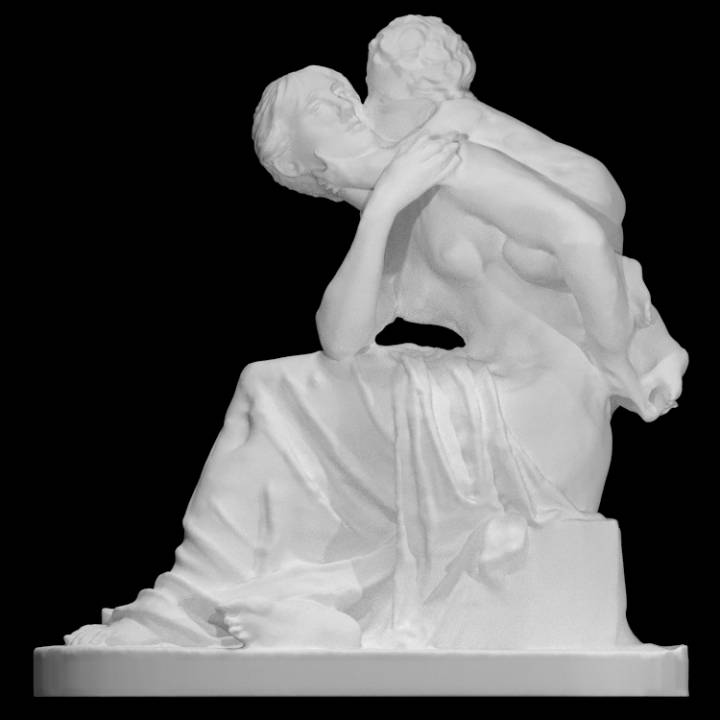
Maternal Affection
myminifactory
According to a 1847 article in the Art Union, Baily displayed a plaster model of this work in 1823, yet no major commission for marble resulted. Undeterred, he carved one from marble the following year. After finding himself unable to sell it, he arranged to dispose of it through lottery, along with another smaller piece. Only half the tickets were sold (totaling £550), which included the ticket for the smaller work but not Maternal Affection. The winner of the smaller work was the wealthy Duke of Buccleugh. Baily eventually managed to sell Maternal Affection for £350 in a private sale to Joseph Neeld, a director of a silversmith company. However, there seems to be a discrepancy with this account. Baily exhibited a piece called Affection etc at the Royal Academy in London in 1823 (item no. 1102), and in 1825 he displayed Affection: a group at the British Institution in London (item no. 410), possibly the same work. Not until 1837 did he show Group, Maternal Affection' at the Royal Academy (item no. 1179), which was likely this piece. It later belonged to Joseph Neeld and remained in his collection at Grittleton House, Wiltshire, until its sale in 1964 when it was acquired by the V&A. Another version exists - there may be others - at the Fitzwilliam Museum, Cambridge. It is signed and dated '1841'. Maternal affection was also reproduced in reduced format in Parian ware (a type of white porcelain). Despite this, Baily's most famous sculpture remains the figure of Lord Nelson standing on London's Trafalgar Square column. Edward Hodges Baily (1788-1867) was a renowned English sculptor and designer. As the son of a ship's carver, he began his career as a wax modeller. He spent seven years in John Flaxman's studio, where he was acknowledged as his favorite and most devoted pupil. He attended the Royal Academy Schools. Baily is responsible for the Nelson on Nelson's Column, half of the sculpture at Marble Arch, some exterior work on Buckingham Palace, and various monuments in St Paul's and Westminster Abbey. His work that brought him fame was Eve at the Fountain first shown in 1818 at the Royal Academy. Gallery location: Sculpture, Room 22, The Dorothy and Michael Hintze Galleries, case FS This object is part of "Scan The World". Scan the World is a non-profit initiative introduced by MyMiniFactory, through which we are creating a digital archive of fully 3D printable sculptures, artworks, and landmarks from around the globe for public access. Scan the World is an open-source community effort; if you have interesting items nearby and would like to contribute, email stw@myminifactory.com to find out how you can help.
With this file you will be able to print Maternal Affection with your 3D printer. Click on the button and save the file on your computer to work, edit or customize your design. You can also find more 3D designs for printers on Maternal Affection.
